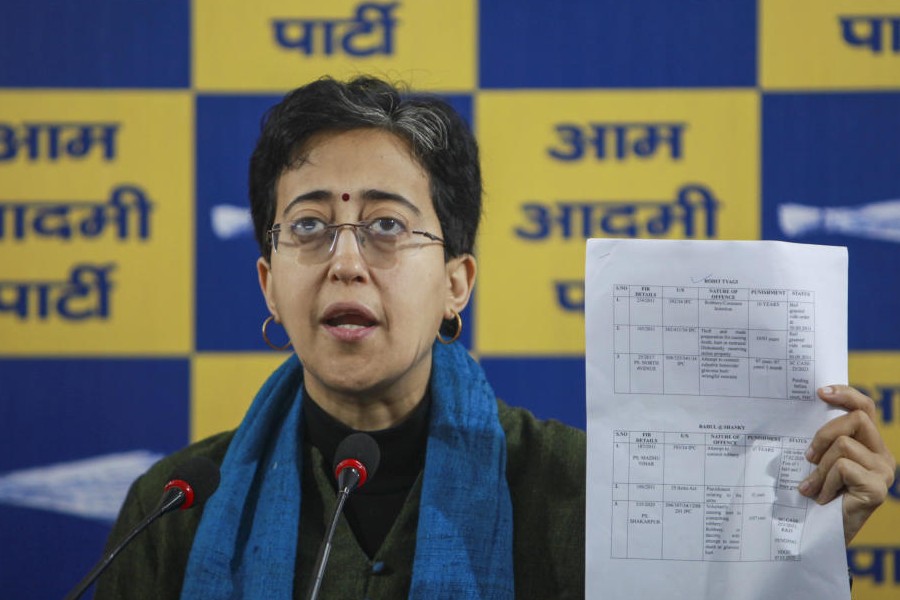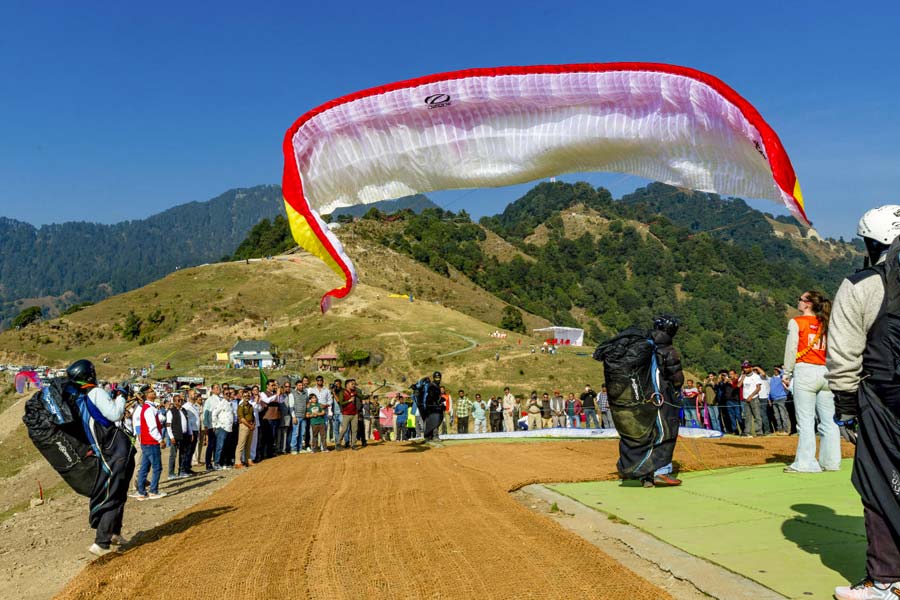


Weavers, weaving at break of day/Why do you weave a garment so gay, Sarojini Naidu asked of the Indian weaver years ago. One may well return to the nightingale's plaintive song today, only Bengal's traditional tant weavers may not have a befitting reply. The drape of dreams - the forte of weavers of Nadia, Burdwan, Hooghly, 24-Parganas, Howrah and many other districts of the state - is shrinking, even as the reach of the powerloom is expanding.
Assembly line production is not a new thing; the machine has long been producing gamchhas, lungis and saris with a thread count of around 80. But the narrative of development must work in tandem with the momentous cycle of demand and supply. A weaver working a handloom can produce a single, very basic sari, in a day's time. The powerloom, on the other hand, dispenses six to eight in the same time.
To keep pace, cotton and silk yarns are also being buffed up with synthetic ones, in varying degrees. The result is that today, powerlooms are churning out 100 thread-count tant saris, and polyester occupies shelf space along with natural fibre. Thread count is a measure of fineness of cloth. Anything around 80 is coarse and 90 or 100, fine enough. The ones of 200 are said to be the finest, but those are in the realm of sari myths. Basically, the machines are catching up with the men, in terms of volume as well as quality.
"It is a huge loss for the artistic potential of Bengal's weavers, a loss for art itself," says Biren Kumar Basak, a tant wholesaler from Nadia's Phulia. We are sitting in his home-cum-workplace. Hanging from the walls are some of his finest weaves, some from 30 years ago. Basak pulls out one intricately patterned with the process of handloom weaving, right from plucking the cotton buds to selling the sari.
Basak is essentially an artist. Even at 66, he prefers to create the designs himself - the more elaborate ones - and then passes them down to his trusted band of weavers. He says, "You cannot replicate the intricacies on a powerloom; these have to be worked in only by the deft fingers of a shilpi (artist)." And yet, Basak estimates that about 30 per cent of Phulia's weaver community has switched to the powerloom. Add to it the brokers and traders who are further eating into the artistic capital of Phulia.
The home of the famed Tangail tant is a place of the same name, which now lies in Bangladesh. This is also where Basak's family is from. "We are jaat tantis... weavers by caste," he says with much pride. Basak and his family escaped to this side of the border in 1962 - he was 11 then - following communal riots, and settled down amongst the weavers of Phulia. He did attend school, but not beyond Class V. Today, around 5,000 weavers work for him.
Swagata Ghosh, senior consultant designer at Sasha, an NGO that works with artisans and craft communities across India, is in awe of Phulia's weavers.
These tantis are highly skilled and inventive, she says, which explains why the hum of their looms is louder than those in Ranaghat, Nabadwip and Nakshipara, places where the powerloom has made deep inroads. They are also able to innovate on motifs as they proceed along the sari's length - something a machine can never do. They are eager to embrace variations, in fabric as well as design.
Ghosh is well aware of the threat to the weavers. "Phulia's handloom weavers are fighting a price war," she says. Retail outlets often pass off powerloom saris as handloom products at a much cheaper price.
"Once I too was taken in," says Riya Gupta, an alumnus of the National Institute of Fashion Technology, Calcutta, who has her own brand of handcrafted products. Gupta has worked with weavers of Phulia, Sreerampore, Benaras and other hubs. She adds, "This is precious art and our [Bengal's] very own; we must recognise it and give it its due."
The government has not been entirely neglectful. Government initiatives - schemes providing looms and accessories free of cost to those who don't have any, training programmes for weavers - have tried to stem the damage. "But with GST, a 5 per cent tax is applicable to handloom products. The sector is sure to be hit further," says an official from the state's textile department, who does not want to be identified.
Appreciation, however, abounds. Only two years ago, Basak was invited to an exhibition in Melbourne, Australia. "I wove the loom while people watched - they loved it," he says. The same year he received an award from the central government, solely meant for weavers who have contributed to keeping alive a handloom heritage. In Basak's case this was for his expertise in the Dhakai jamdani sari.
The jamdani is typically associated with Dhaka. Says Basak, "In the days of the nawabs, food was served in jam batis - antique bowls made of bell metal. These would be covered with fine silken napkins - called jamdanis - with this kind of weave. The name stuck."
Basak is credited with initiating the fine cotton jamdani in the Phulia region. In this kind of fabric, both the taana and baana or warp and weft are of fine cotton yarn. "I tried it out first in the late 1980s, and now all our weavers have mastered it," he smiles. He also keeps an eye on what his friends back in Dhaka are doing. "They work best with traditional patterns, and their taana-baana are silk and cotton. Our cotton jamdanis are more fine," he claims.
Basak wishes to set up a textile museum in Fulia someday, where he hopes such works may be displayed and preserved. "Anybody who wants to can weave, but the jamdani technique requires immense patience," he says, holding up a gossamer muslin jamdani depicting the narrative of a santhal utsav. "It took the weaver no less than three months to make this," he says.
All the weavers working with Basak have been tutored well, and that includes 600 women weavers. But his core group, his "A grade weavers", who specialise in the most complicated of weaves, remain invisible. "These artisans live in remote places, 50 or 100 kilometres into the hinterland and no one is allowed to meet them for business purposes," he tells you.
Naturally, because magic must be woven in secret.











